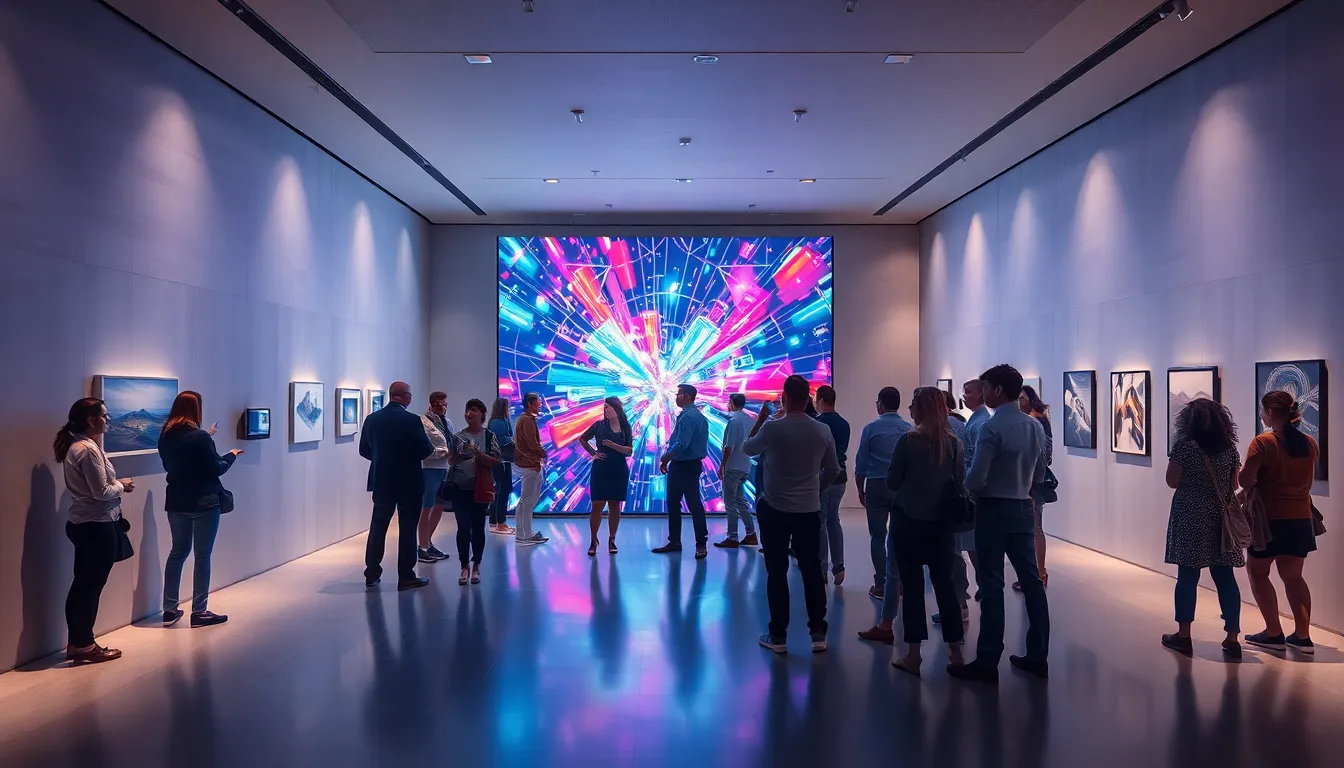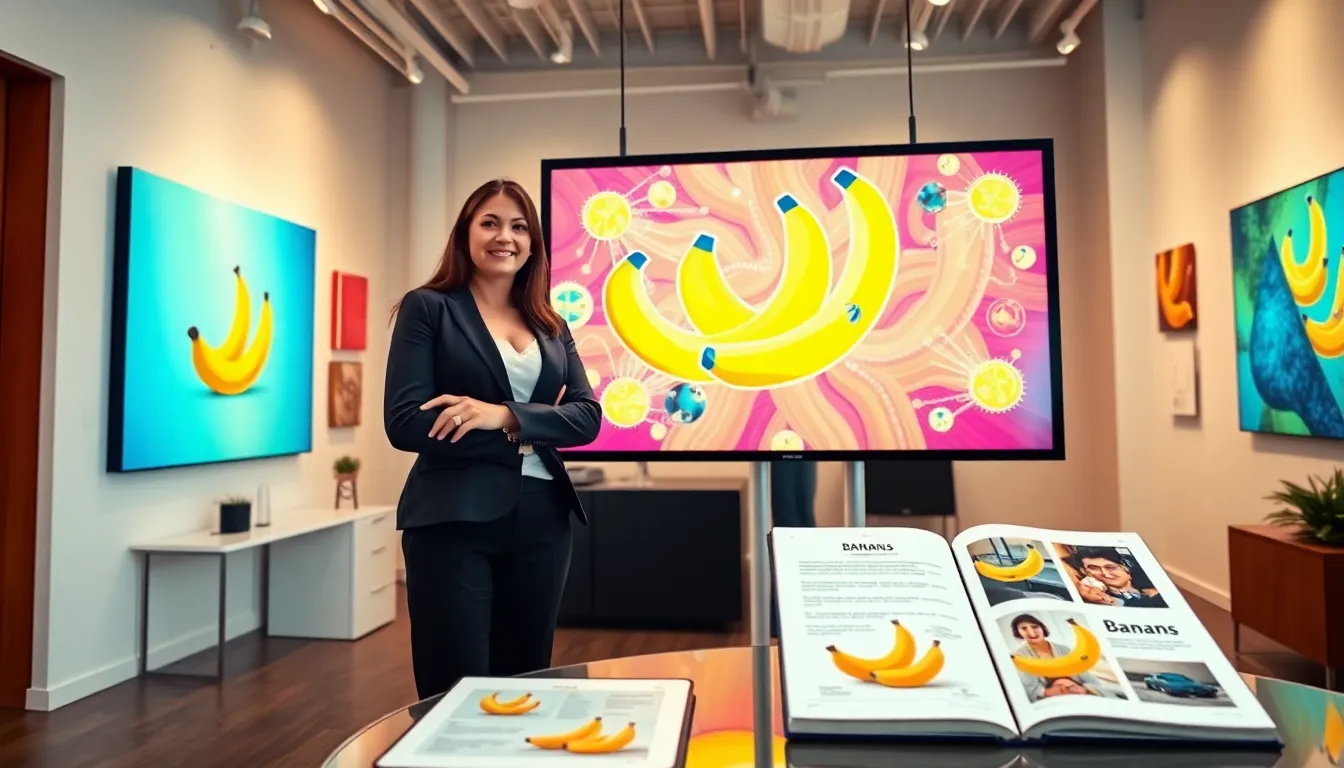In a world where technology meets creativity, the term “technology art” might not only raise eyebrows but also spark curiosity. Imagine a realm where pixels dance, algorithms create melodies, and yes, bananas become canvases. Let’s jump into this vibrant intersection, and who knows, you might even learn where to snag that quirky banana art ebook you’ve always wanted. After all, why not invest in something creative that screams innovative and, dare I say, a little fruity?
Table of Contents
ToggleUnderstanding Technology Art

Technology art is more than just a cool buzzword thrown around at gallery openings. It represents a fusion of artistic expression and the digital age, creating pieces that are both innovative and deeply engaging. At its core, technology art revolves around utilizing modern technologies as a medium for expression. It can range from digital installations that transform spaces, to intricate pieces created via 3D printing, or even interactive video displays where the audience becomes a part of the canvas.
What’s fascinating here is how technology plays a pivotal role in both the creation and the experience of the artwork. Artists today are not just confined to paint and canvas: they have the entire tech landscape at their disposal. From assistive technologies that help artists with disabilities find their voice, to virtual reality (VR) that immerses viewers in entirely new worlds, technology art is defining the future of creativity.
The Role of Digital Mediums in Art Creation
Digital mediums have revolutionized the landscape of art, allowing creators to push boundaries previously unimaginable. Programs such as Adobe Creative Suite and various 3D modeling software have empowered artists to manipulate colors, shapes, and textures in extraordinary ways. Art can now exist in forms that embrace change: a single project can evolve over time, morphing with each update or stroke.
Besides, emerging technologies like augmented reality (AR) bring a new layer to the digital narrative. Artists can now create artwork that interacts with reality, merging the physical and digital with a mere swipe of a smartphone. Remember, the art of today isn’t just seen: it’s experienced, reshaping how art is appreciated and interpreted. The digital revolution doesn’t just create art: it creates communities, giving artists a platform to share their work beyond the confines of traditional galleries.
Exploring the Concept of Banana Art
Banana art? Yes, you read that correctly. This curious niche has gained attention for transforming the humble banana into an unexpected medium for creativity. Artists have embraced this fruit, expressing everything from intricate carvings to digital illustrations featuring bananas, celebrating its playful and often humorous dimension.
Consider the case of the infamous banana duct-taped to a wall at Art Basel Miami. This piece exemplified how banana art can not only poke fun at the art world but also draw attention to the broader conversation about value in the contemporary art scene. Are we appreciating the artistic process or the concept behind it? This debate dovetails perfectly into the digital realm, where banana-themed graphics and animations flourish online. It’s a whimsical reminder that technology and art don’t always have to take themselves seriously: sometimes, they just need to have fun.
The Rise of RedWebzine and Its Impact on Technology Art
In the evolving world of technology art, platforms like RedWebzine have emerged as catalysts for creative expression. RedWebzine not only showcases art but also dives deep into the narratives surrounding technology’s influence on artistic practices. They feature a diverse range of emerging artists, making it a beacon for innovative works that span genres and styles.
What sets RedWebzine apart is its commitment to illuminating the often-overlooked intersection of tech and art. By hosting online exhibitions and interactive features, they empower both creators and viewers to embrace the digital age’s artistic potential. Accessibility becomes key, allowing art enthusiasts to discover pieces that challenge their perspectives, engage with artists directly, and purchase digital artworks, including innovative ebooks that investigate deeper into specific subjects like banana art.
Purchasing Digital Art: A Guide to Buying Ebooks
When it comes to purchasing digital art, there are many avenues to explore. Digital works are often available through various online platforms, from artist websites to specialized digital art marketplaces. Ebooks provide an immersive experience that can include not just images but also rich narratives behind the art, techniques, and artist interviews.
Here’s a simple guide to streamline your buying process:
- Research: Start by identifying what type of digital art you want. Are you drawn to banana art, conceptual pieces, or perhaps interactive digital installations?
- Explore Platforms: Websites like Etsy or dedicated art stores often feature e-books from independent artists. Check social media as well: many artists share links to their works directly.
- Check Reviews: Before purchasing, read through reviews and feedback. This ensures you’re investing in quality material from credible artists.
- Consider Licensing: Understand the licensing agreements for the ebooks you buy. Some may grant you personal use rights while others might allow for transformations.
- Engage with the Community: Join forums or social media groups focused on digital art. Engaging with communities can lead you to hidden gems and help you navigate your decisions.
Following these steps ensures you don’t just wander aimlessly in the digital art world but make informed choices that enrich your collection.




